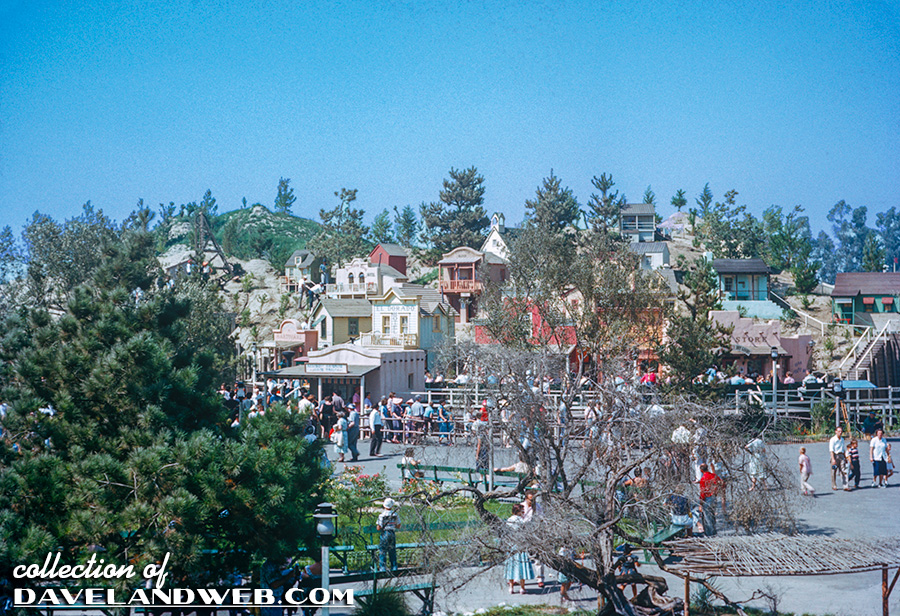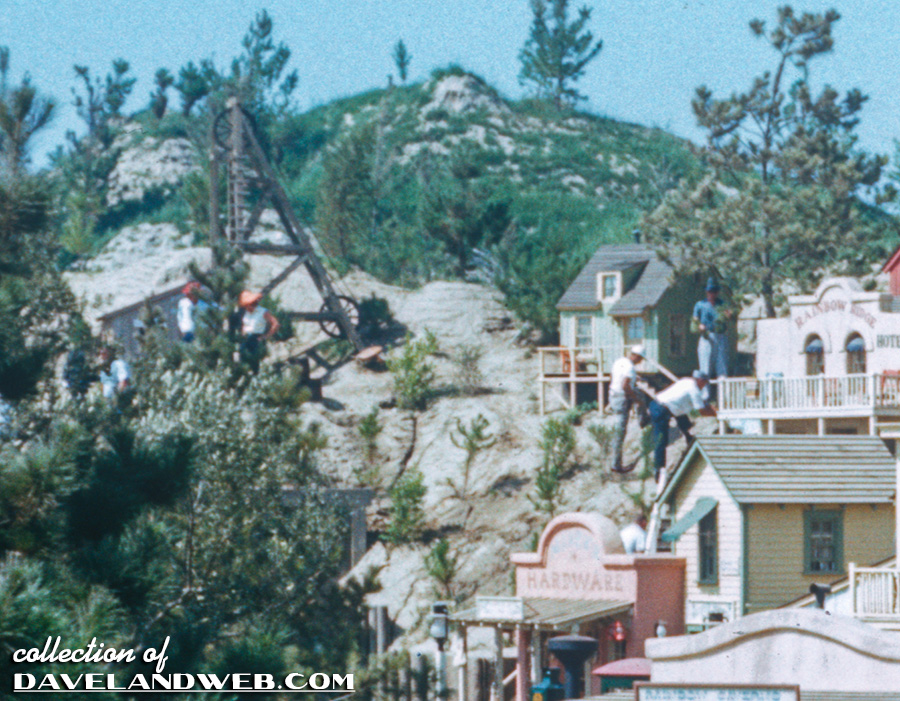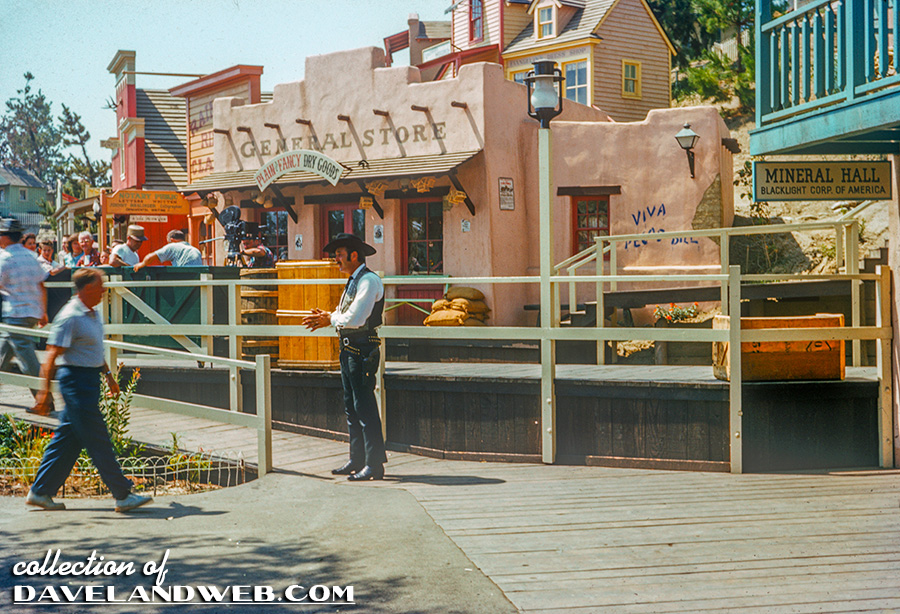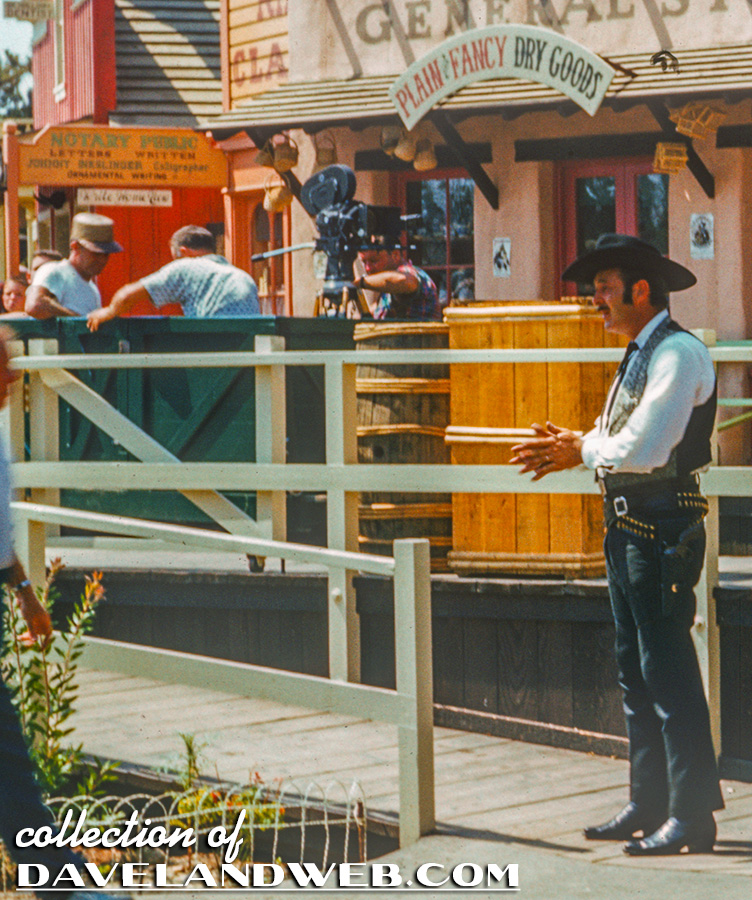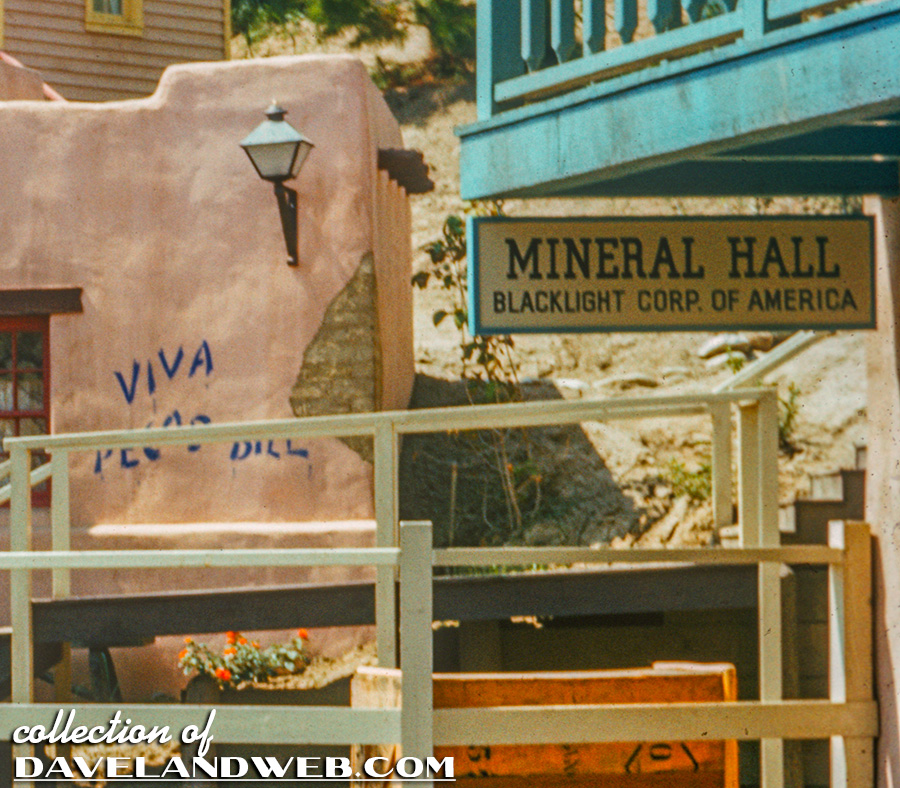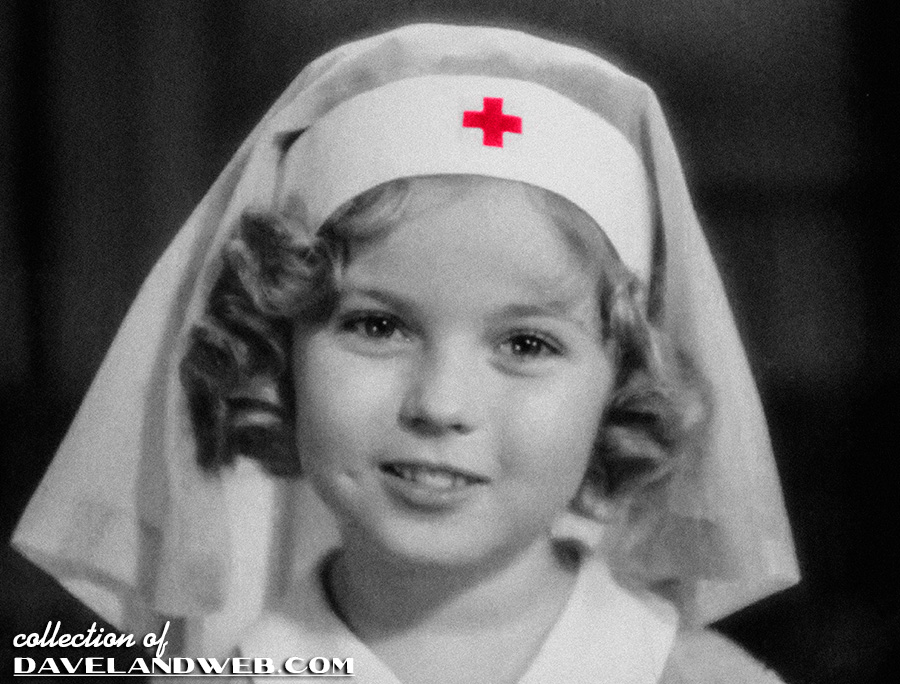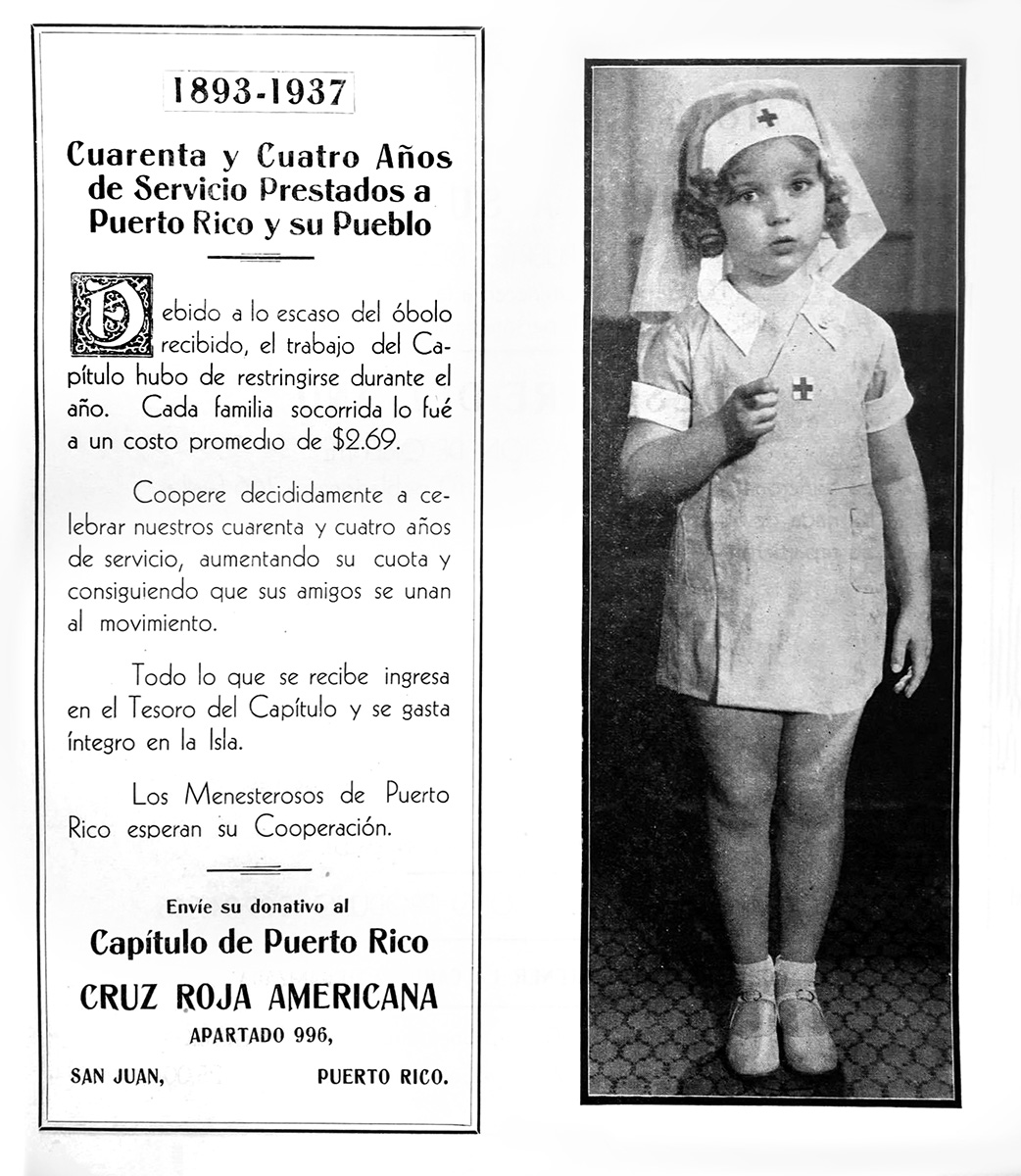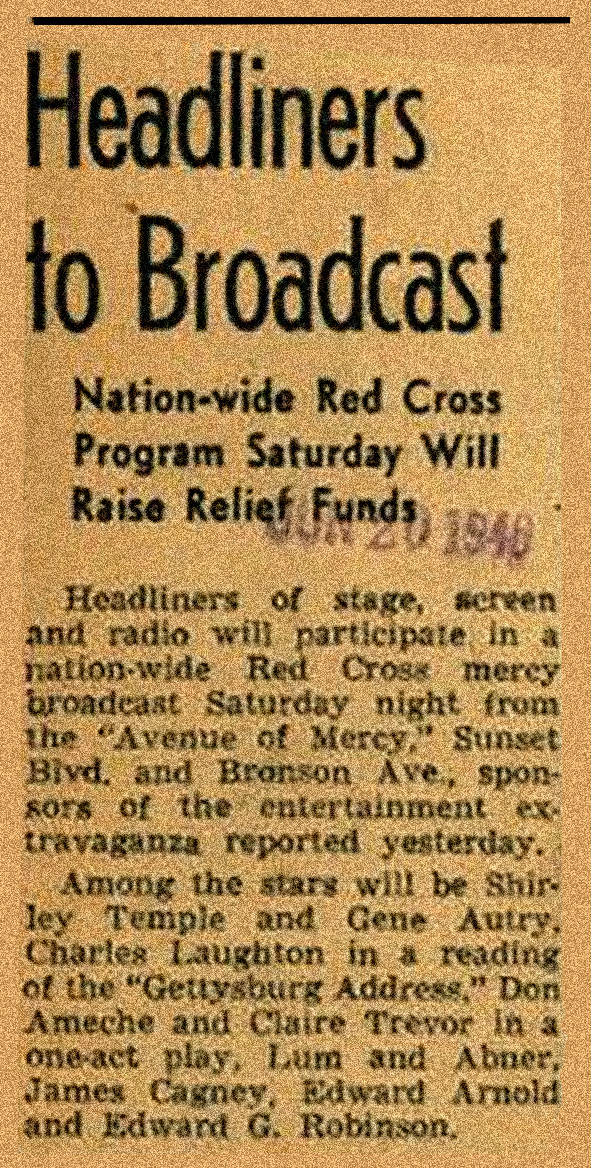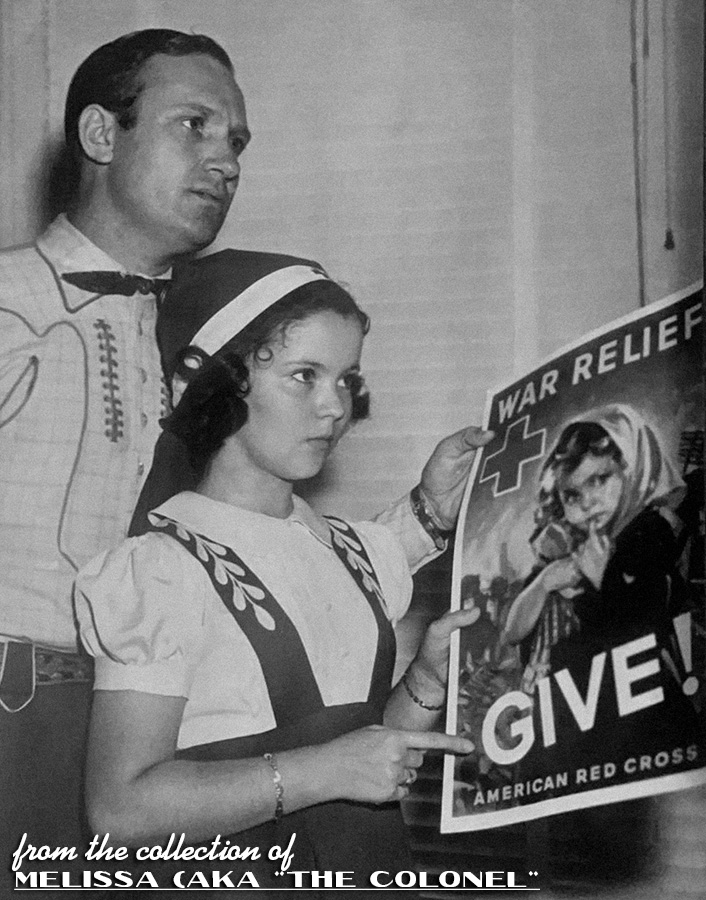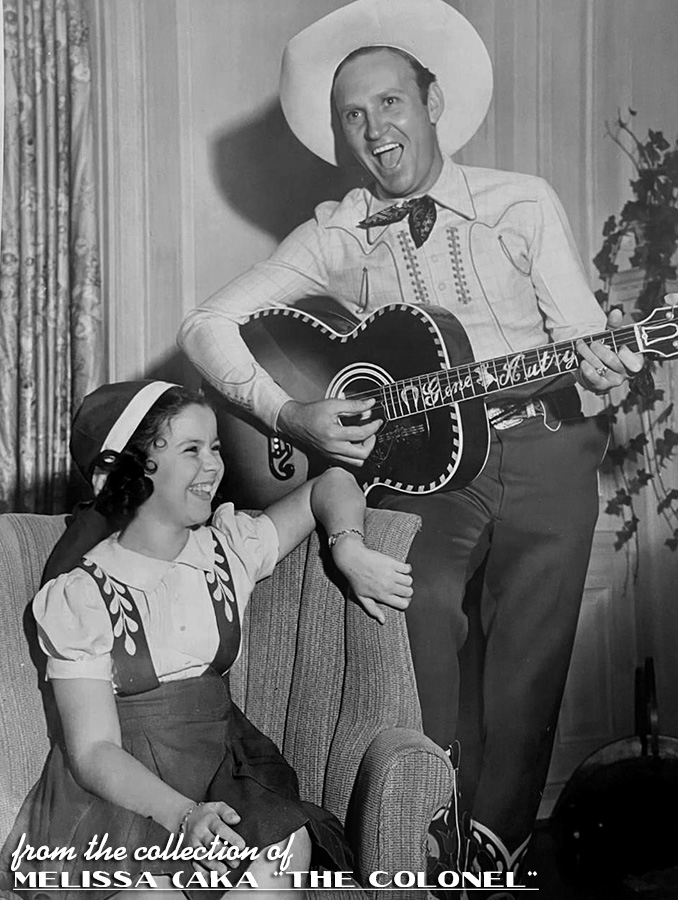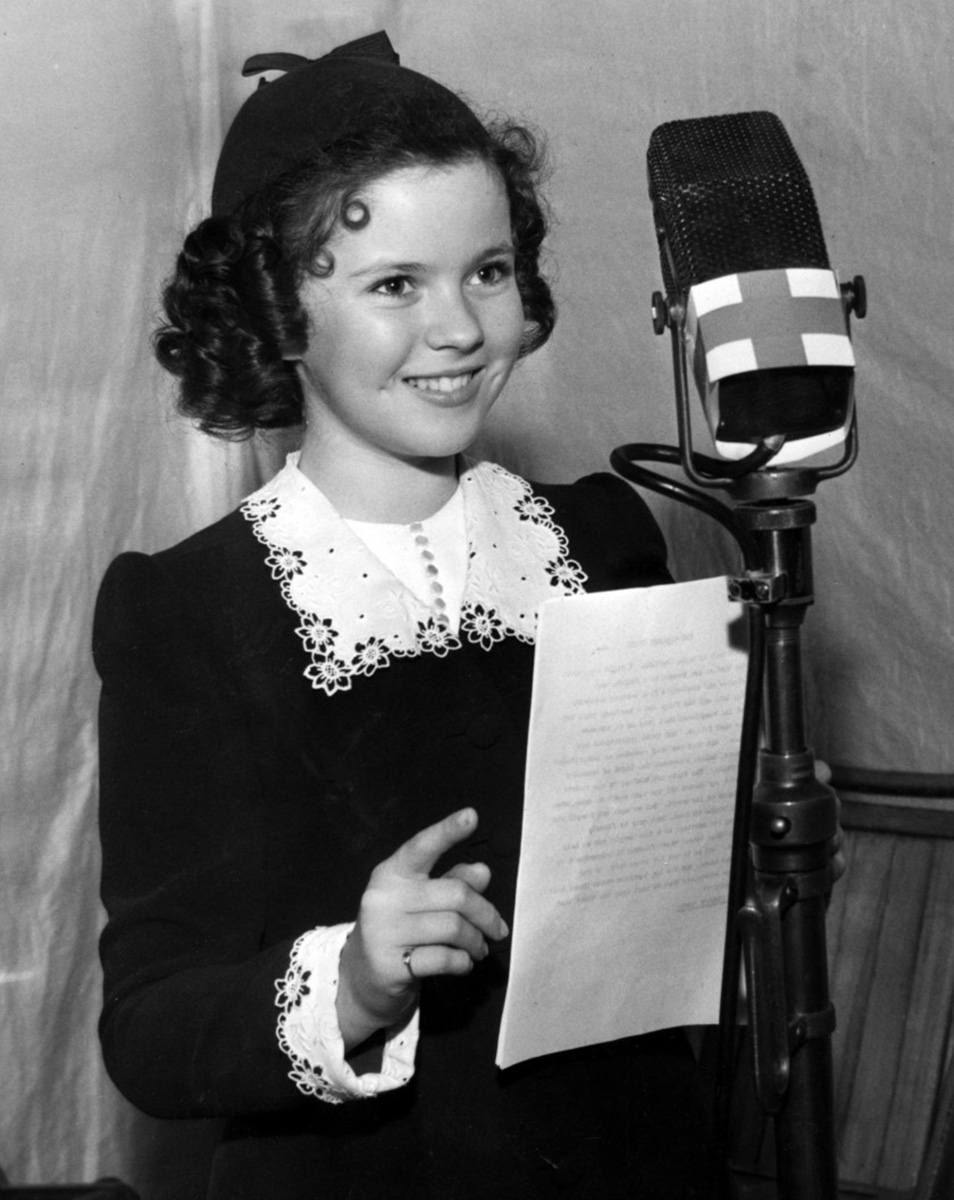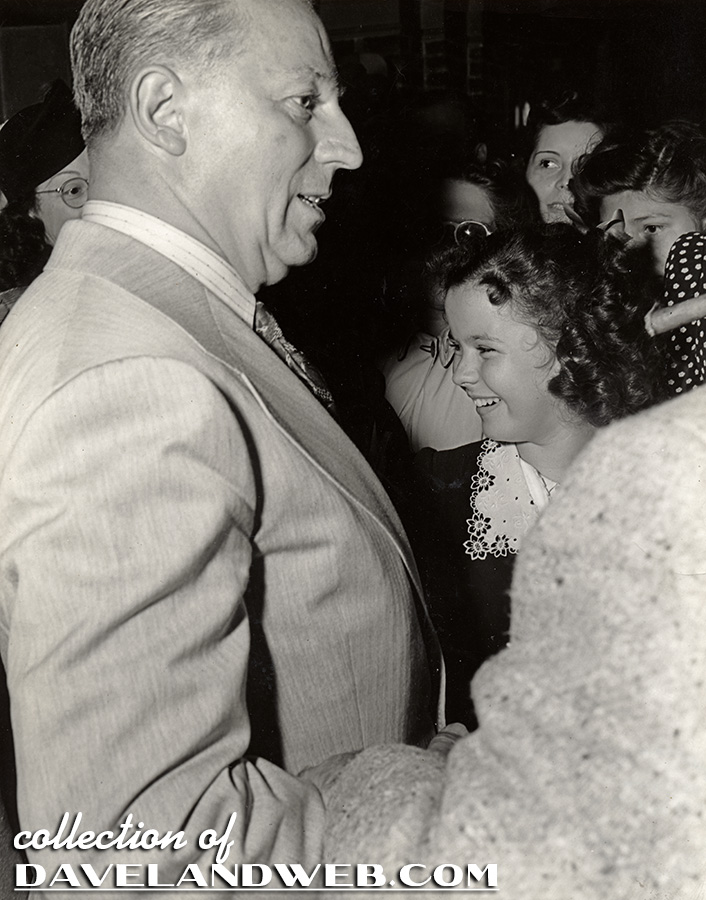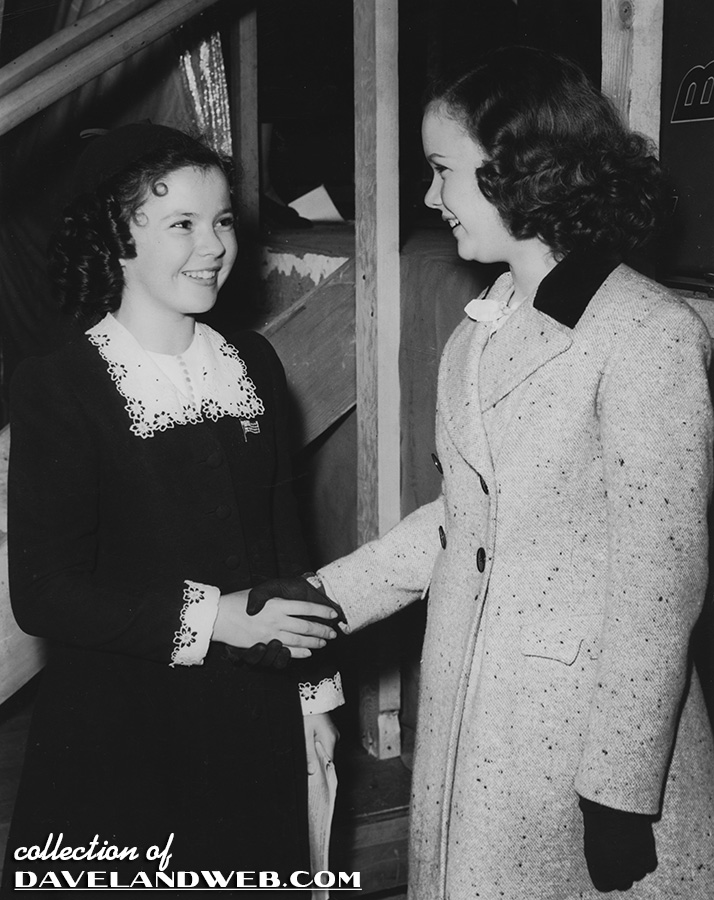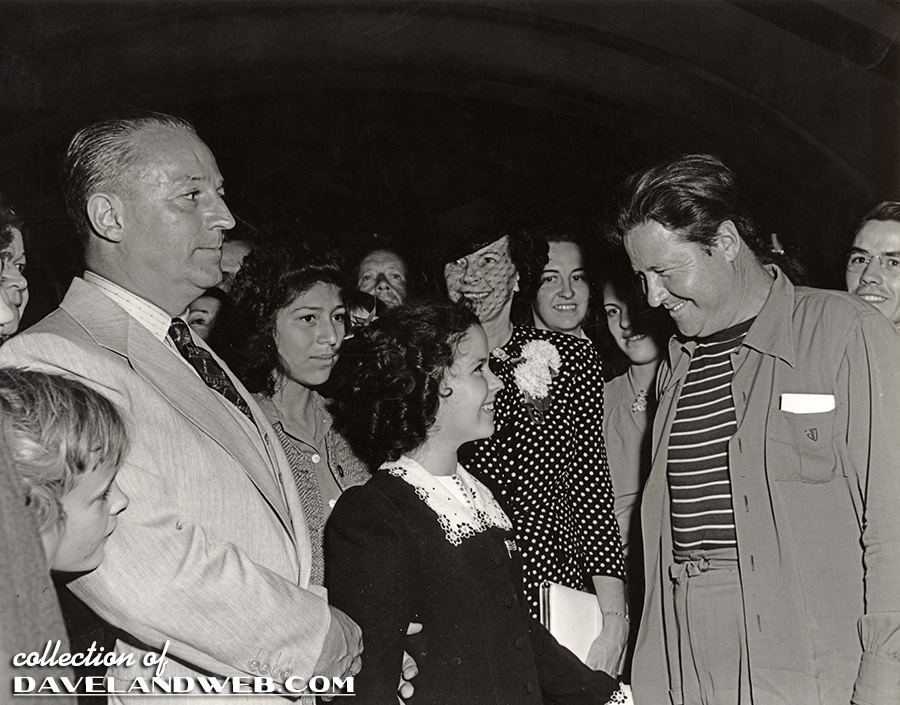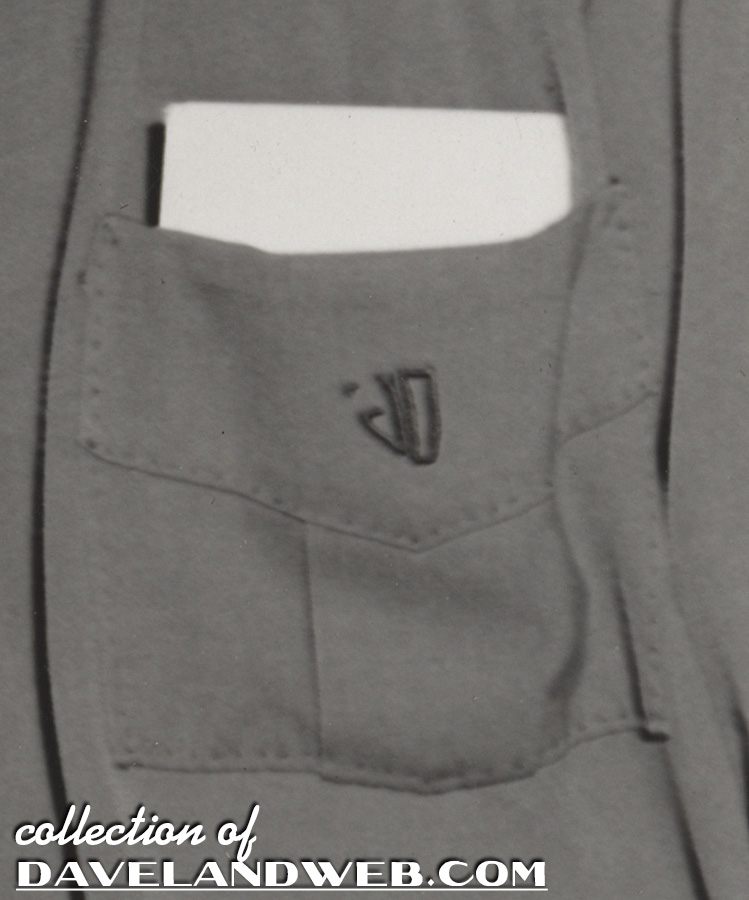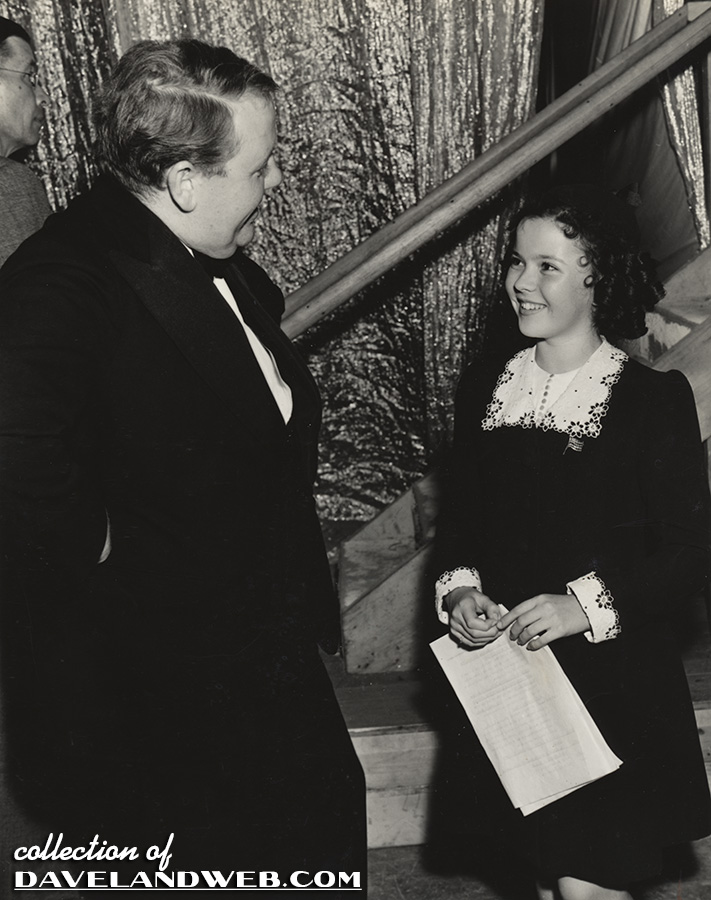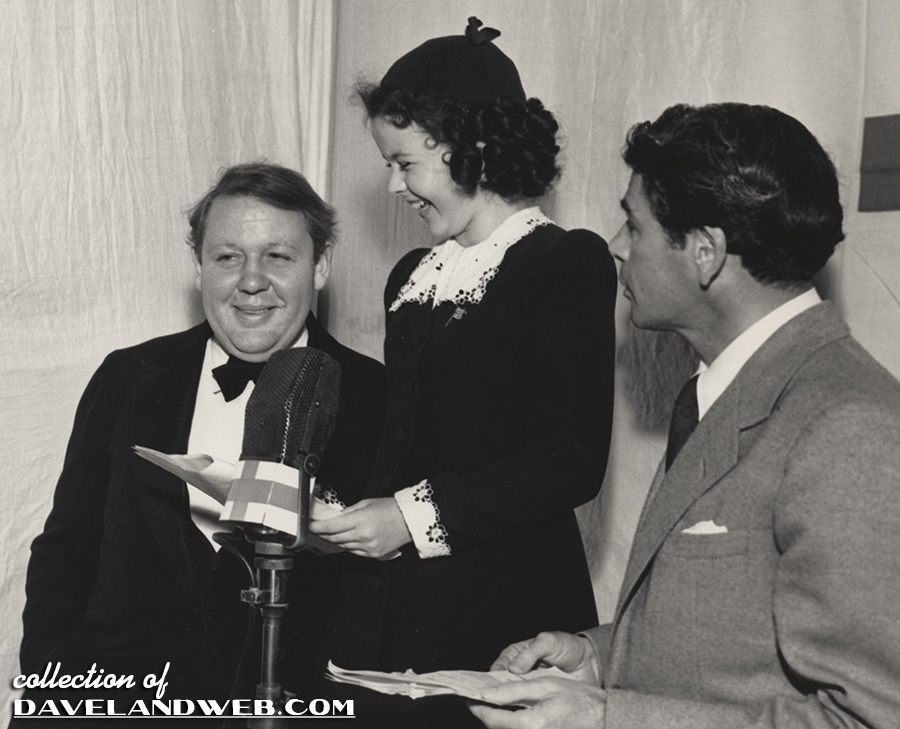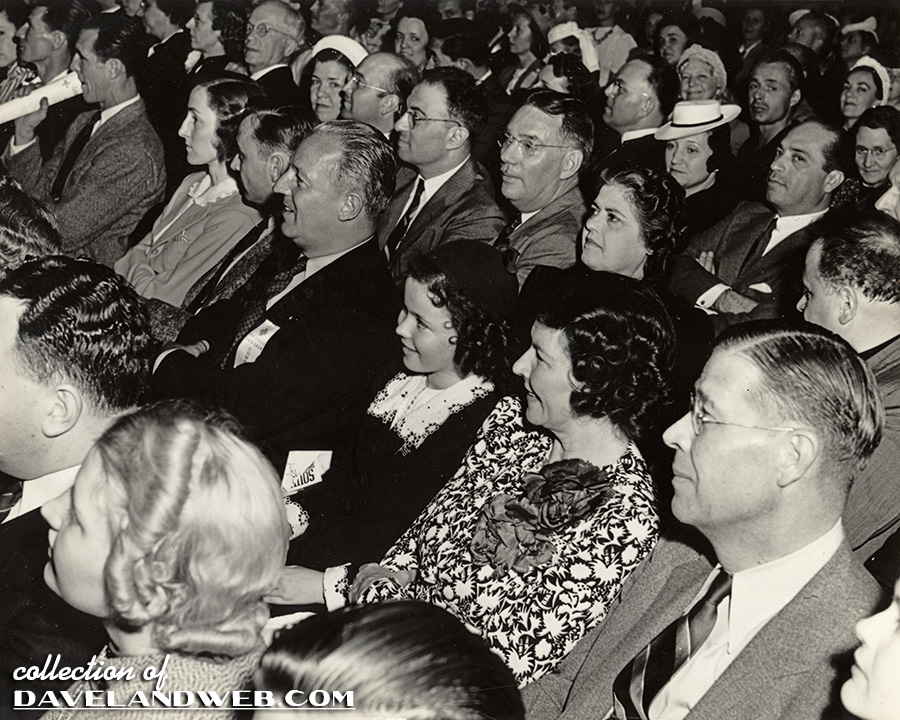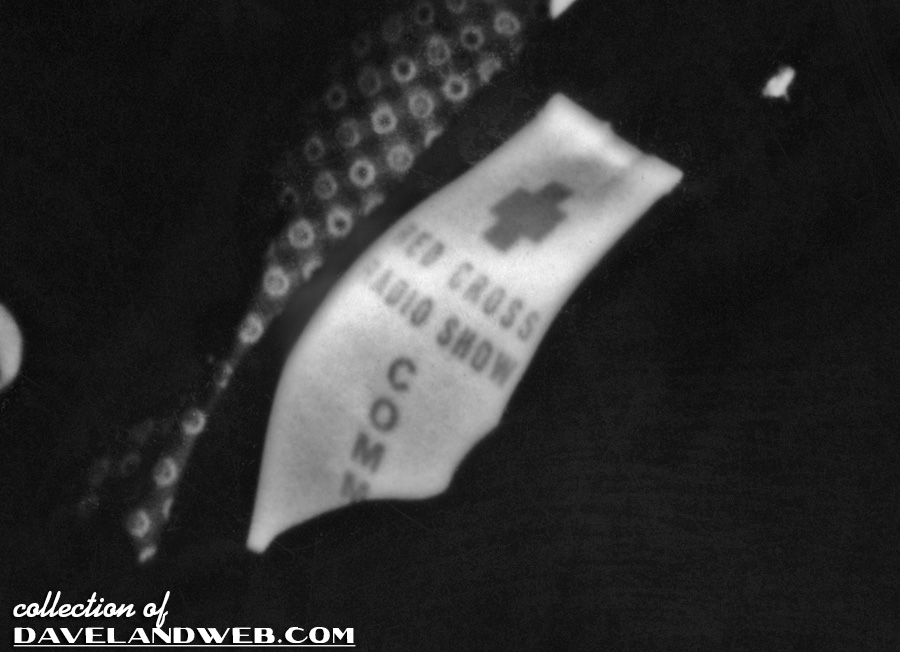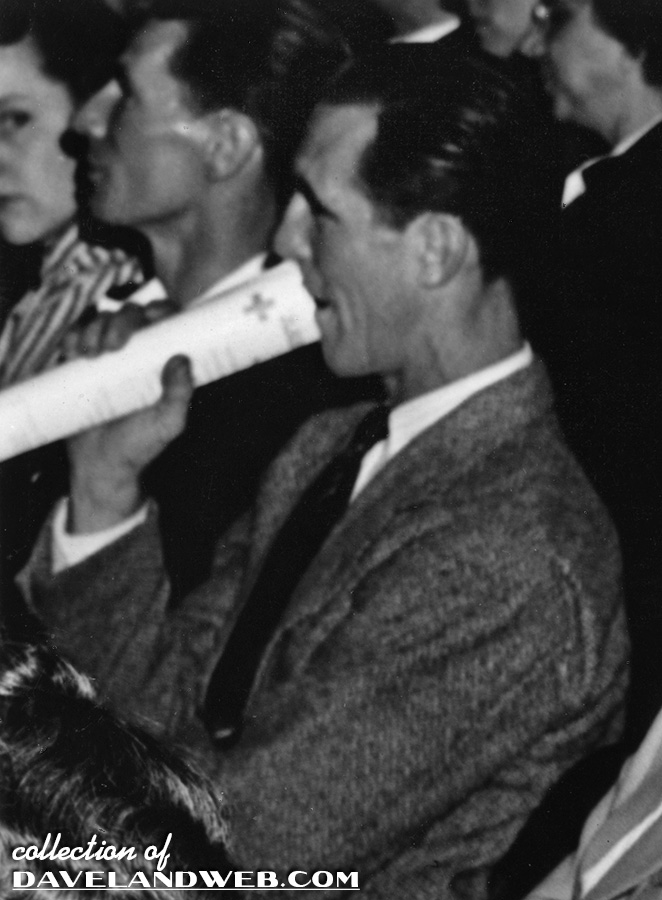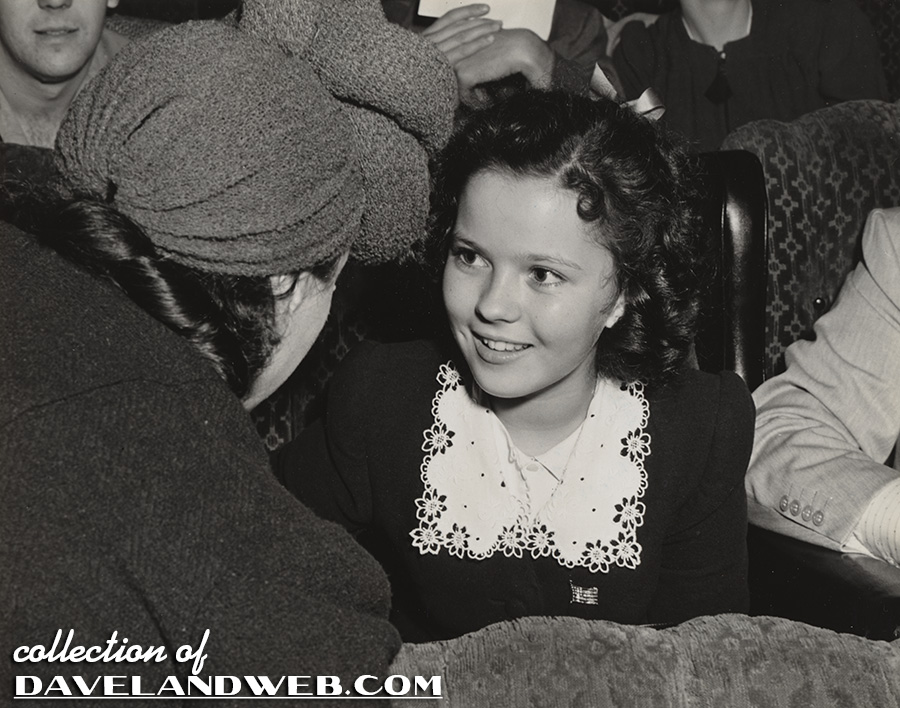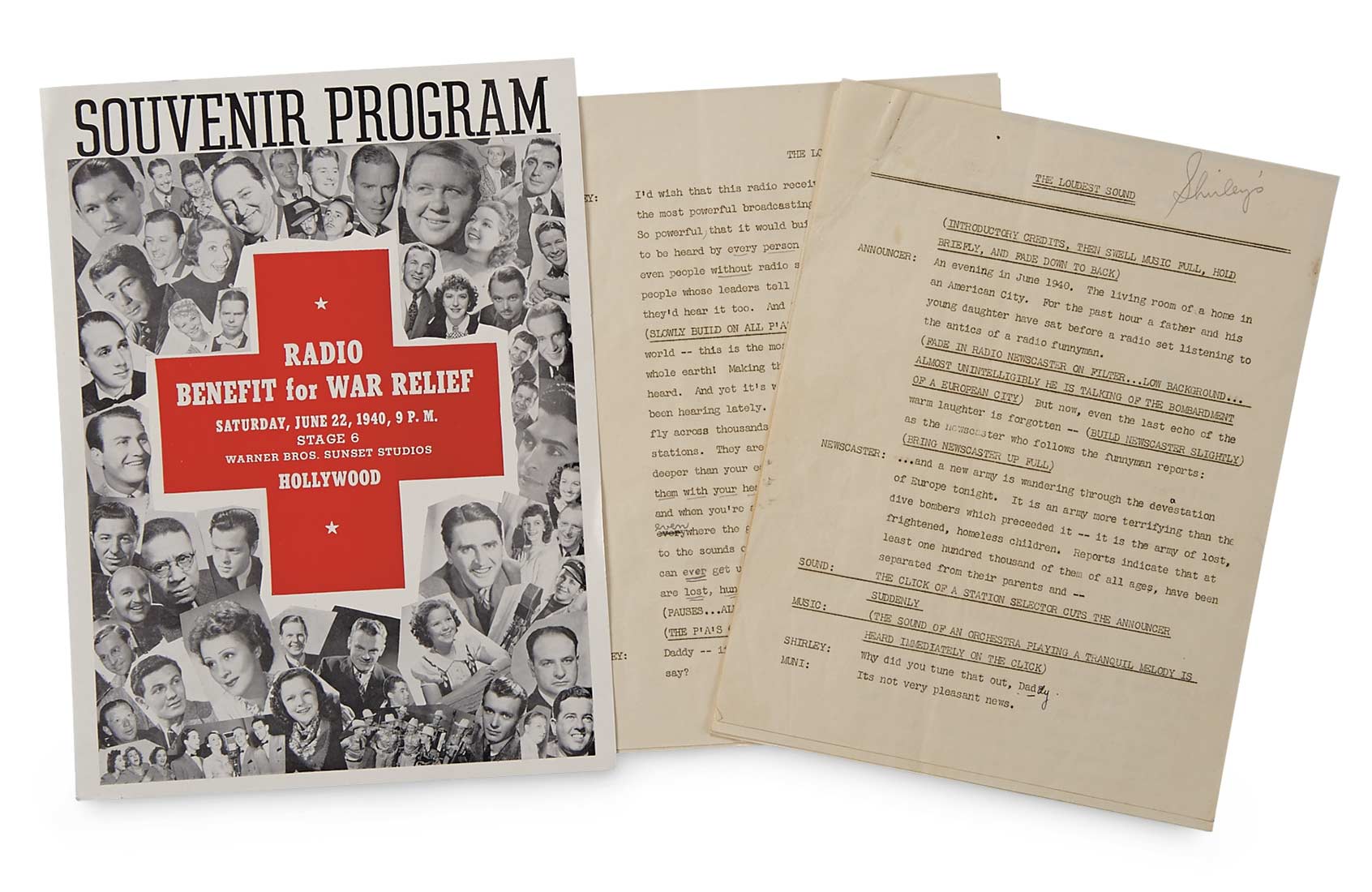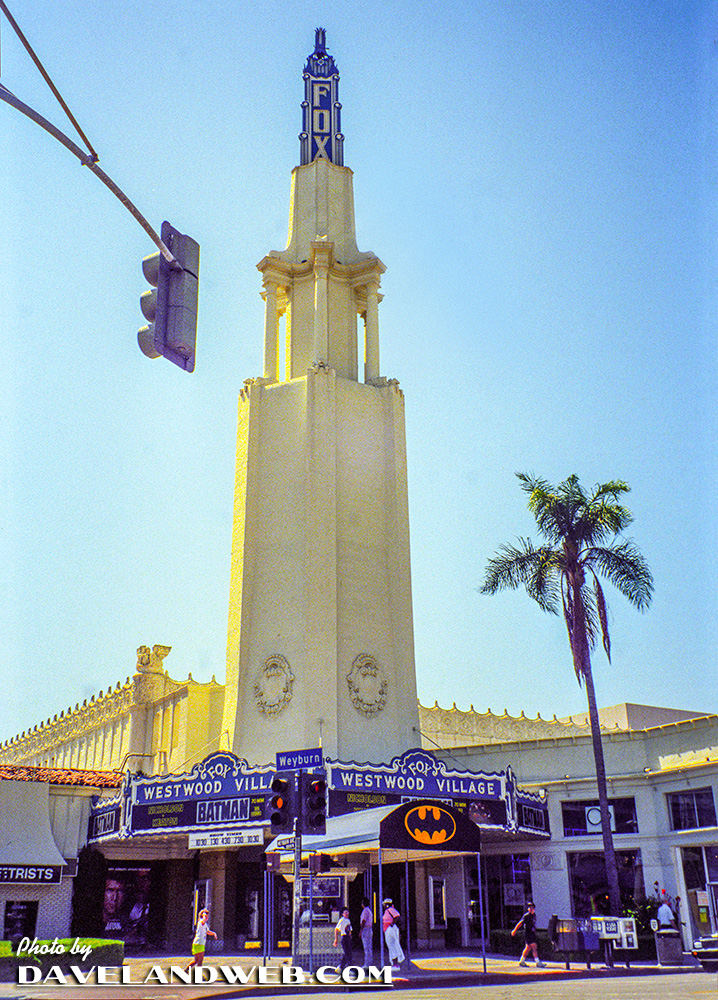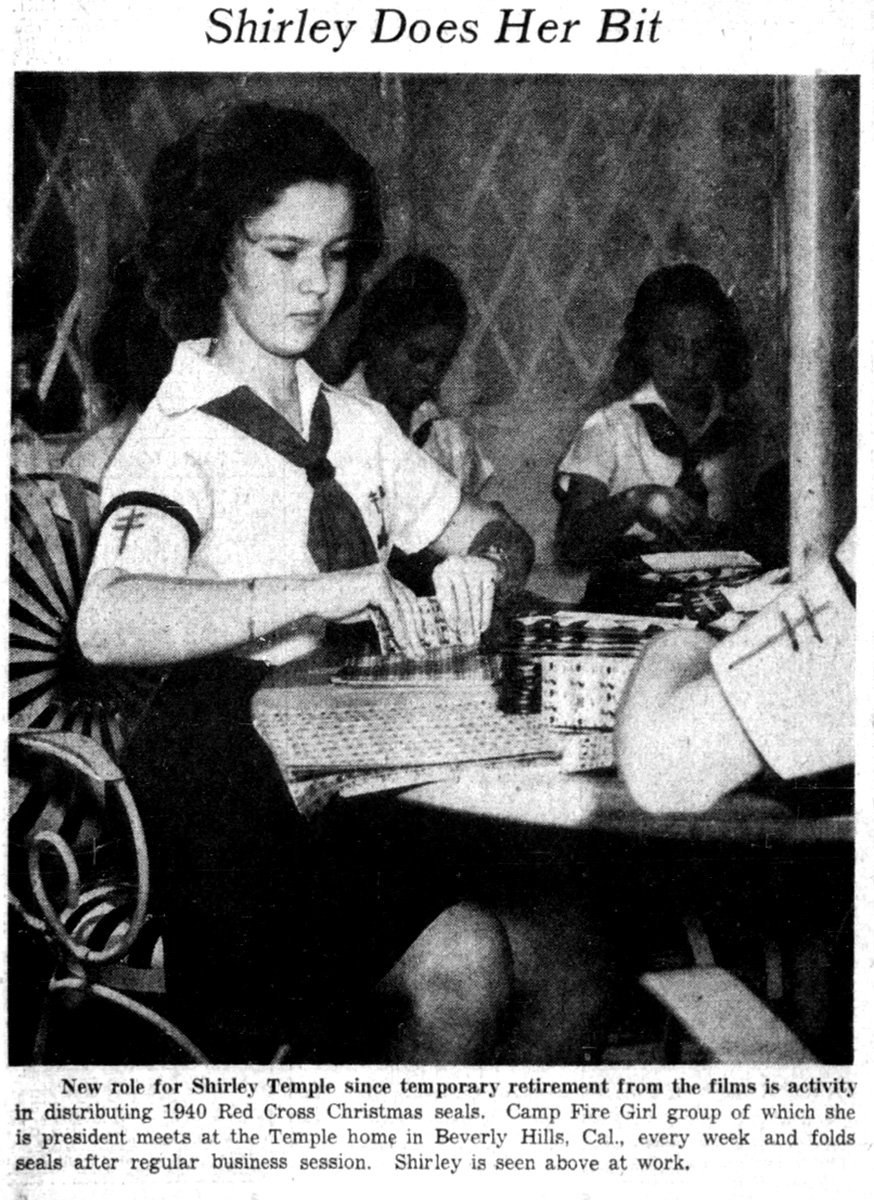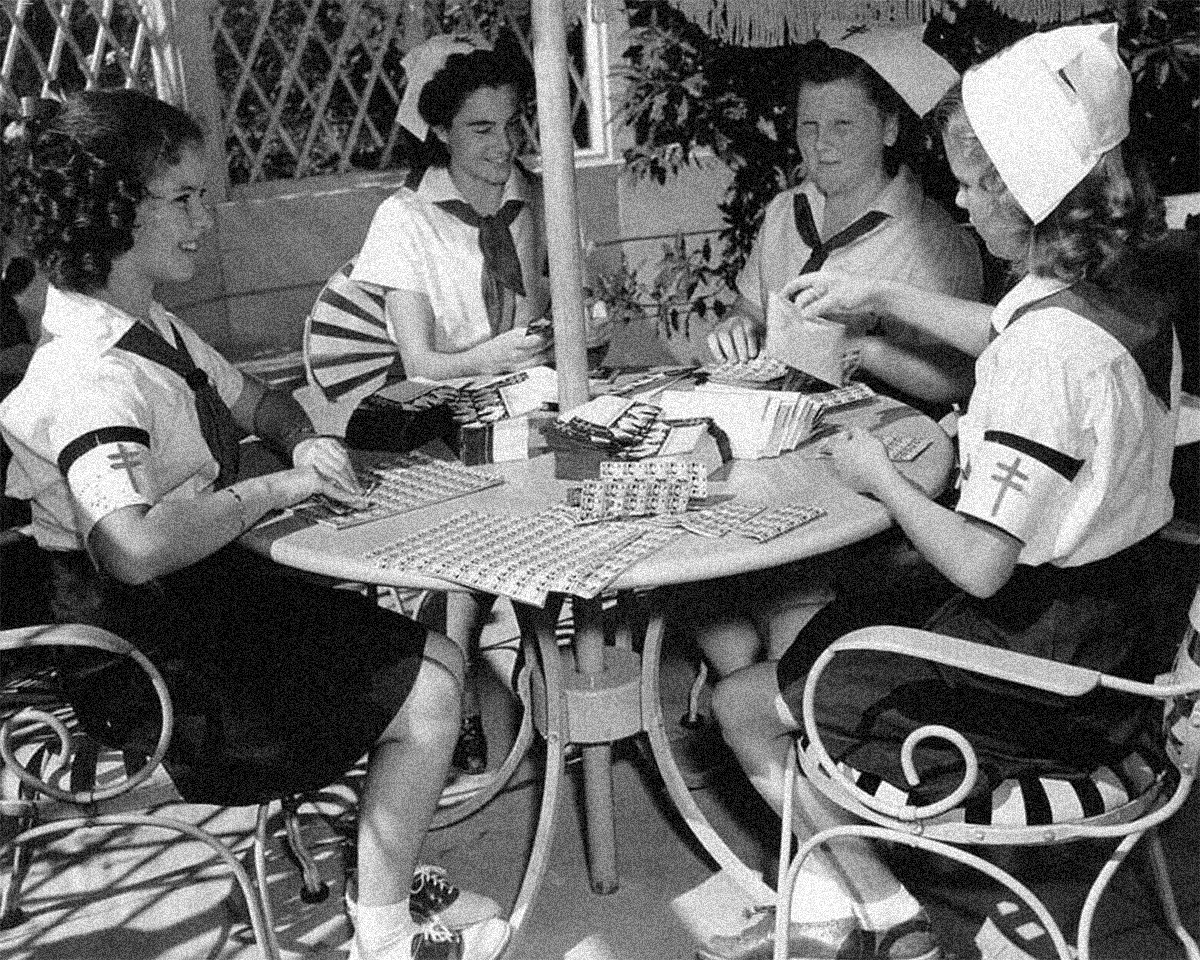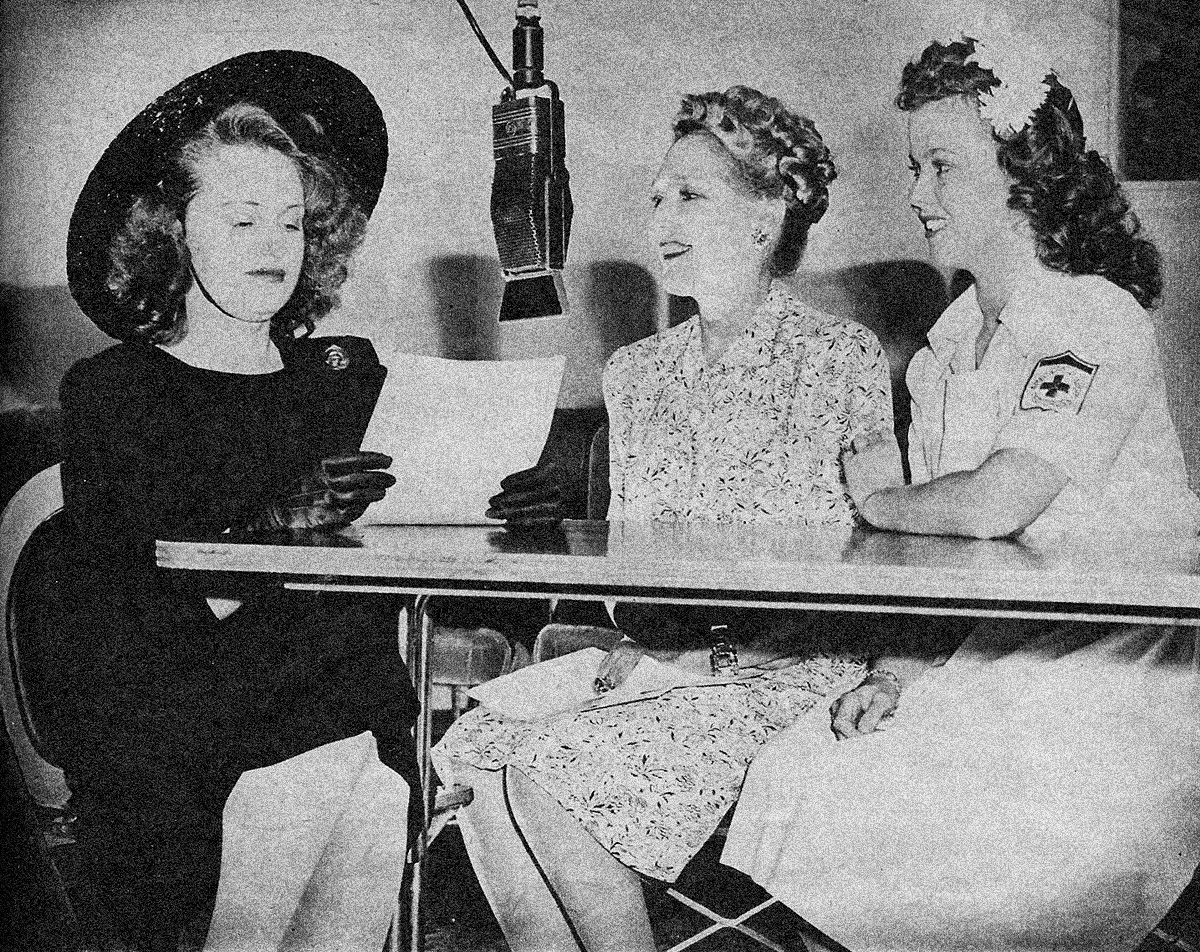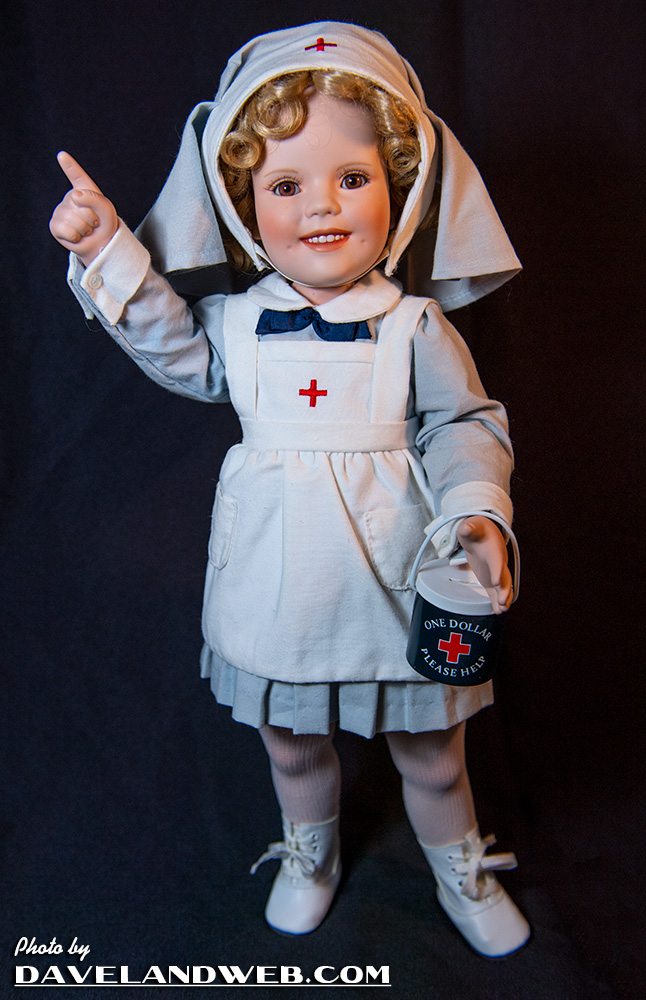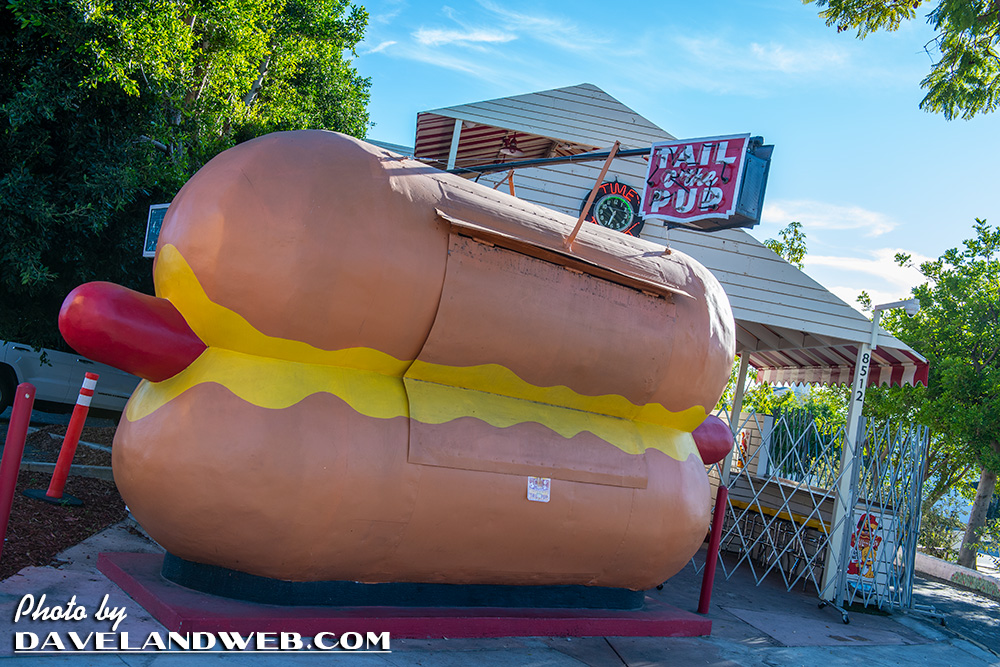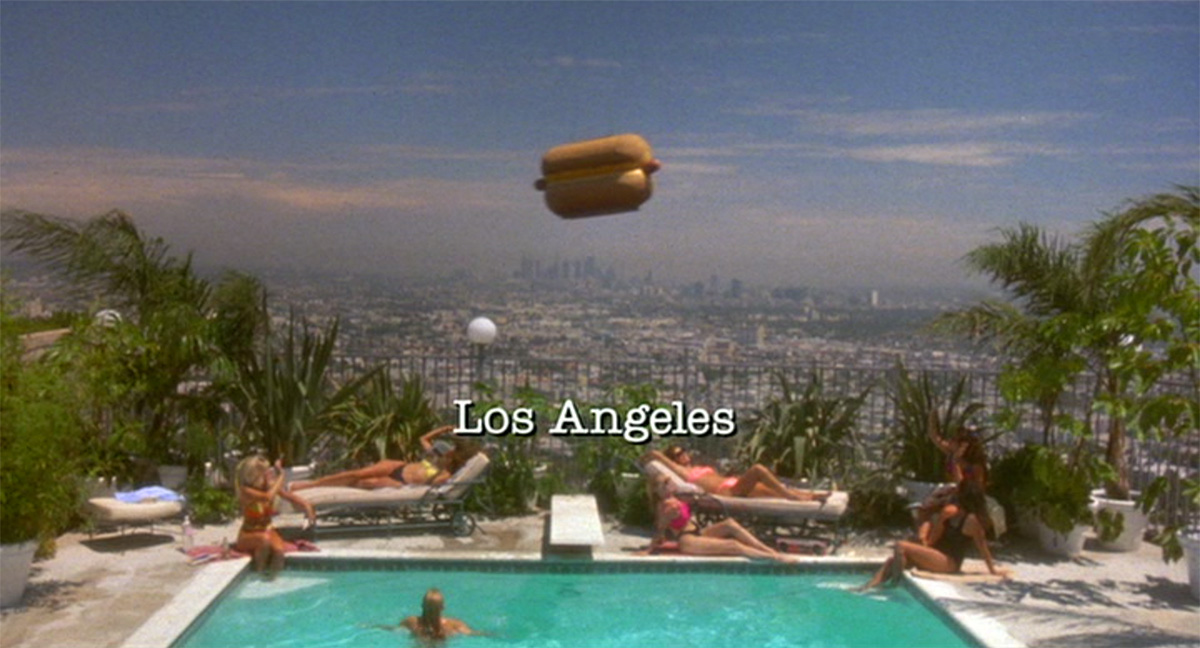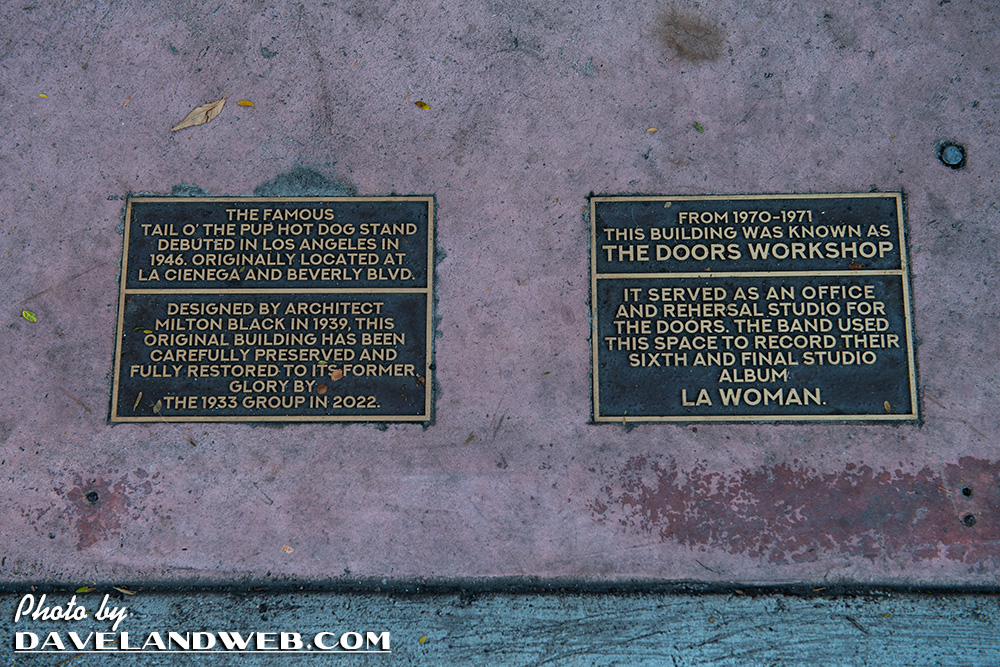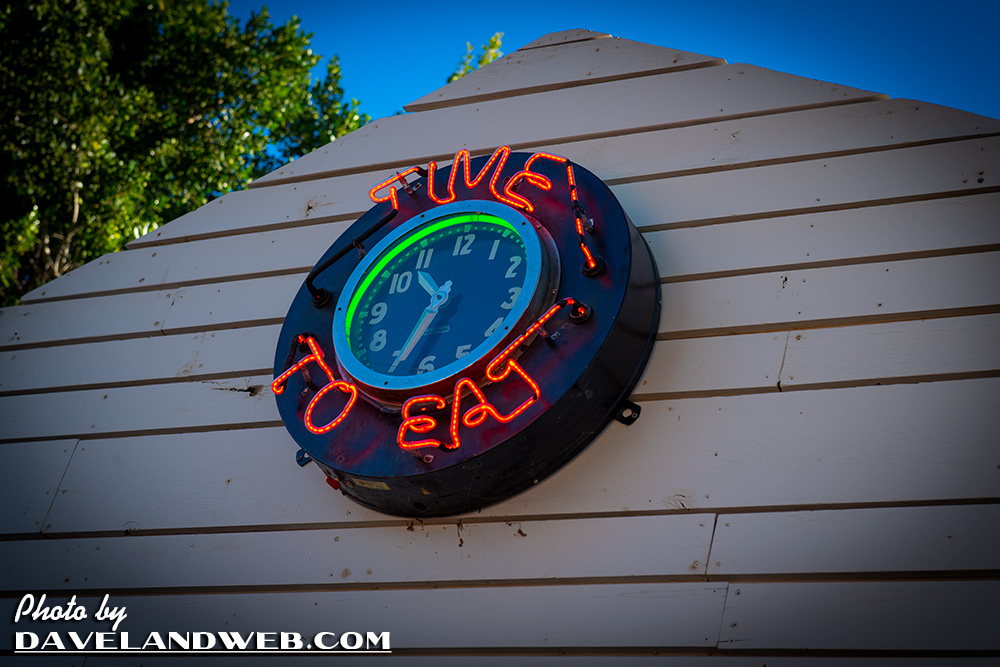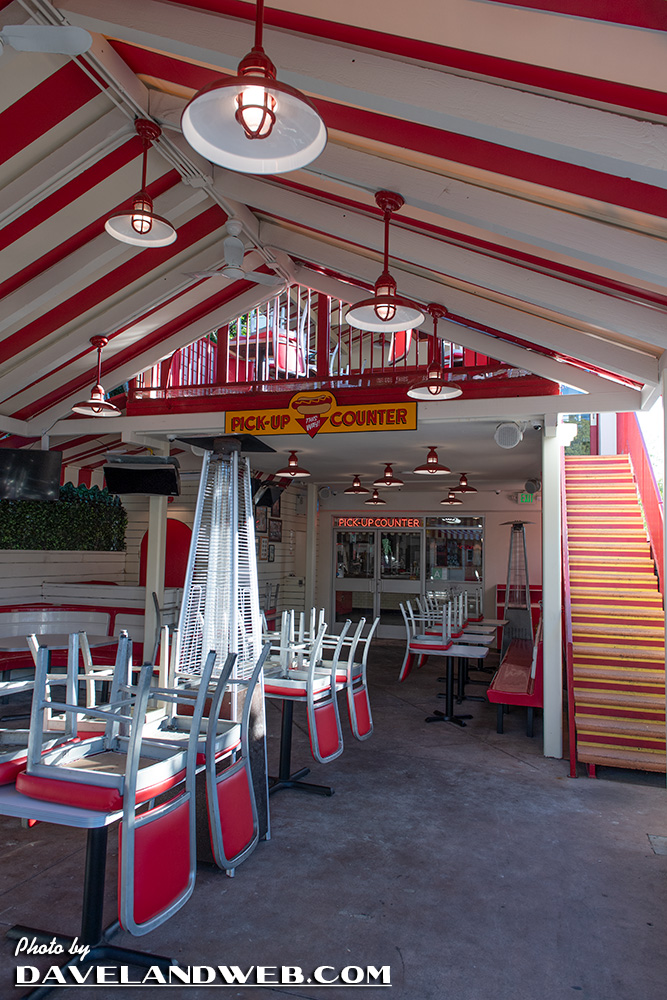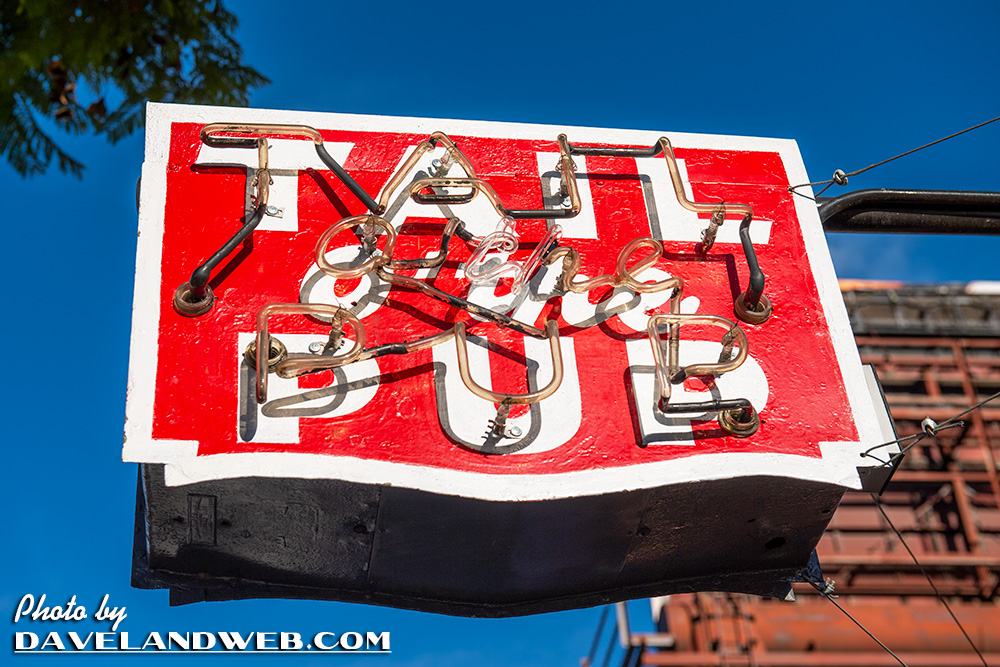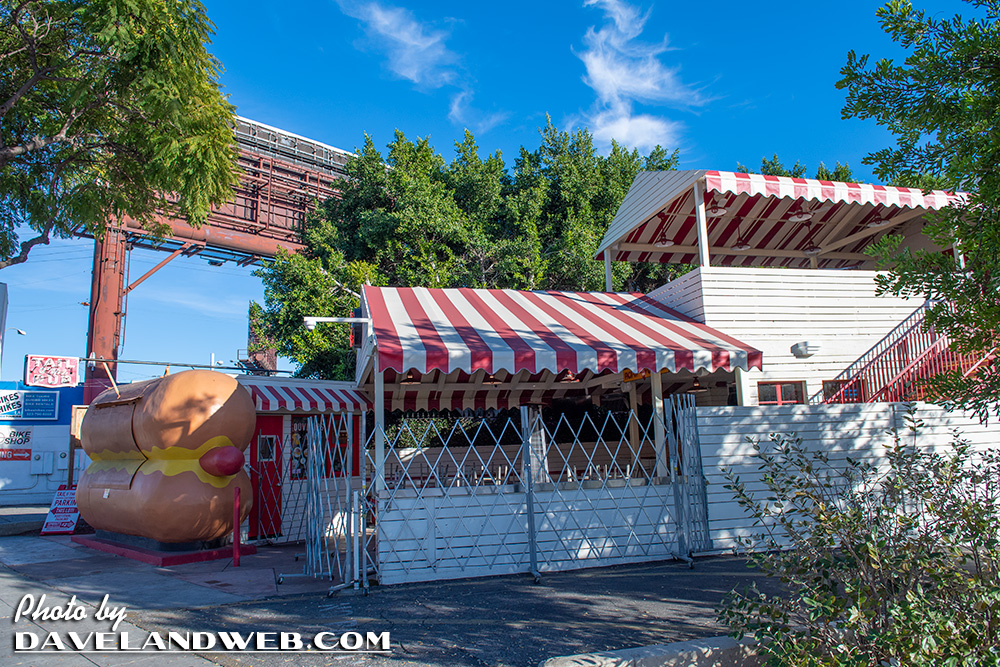
Last September, I blogged about singer-songwriter Gram Parsons staying in Room 47 at the Chateau Marmont in Hollywood. This began my descent down the rabbit hole of Google. I learned that he was influential in both country and rock music, earning him the #87 slot on Rolling Stone’s list of “100 Greatest Artists of All Time.” At the same time, he battled substance abuse issues (both drugs and booze), which ended with him OD’ing at the Joshua Tree Inn on September 19, 1973 at the tender age of 26. With a bit more digging, I learned that the Inn is still in operation and has titled the room where Gram died (#8) as the Gram Parsons room. From the Inn’s website: This is where the father of “Cosmic American Music” went from rock-star to rock-legend...and some say his spirit still lives. Bring your guitar and write songs. Having stayed in his room at the Chateau, I had to complete the circle and trek out to Joshua Tree. That’s how I operate.
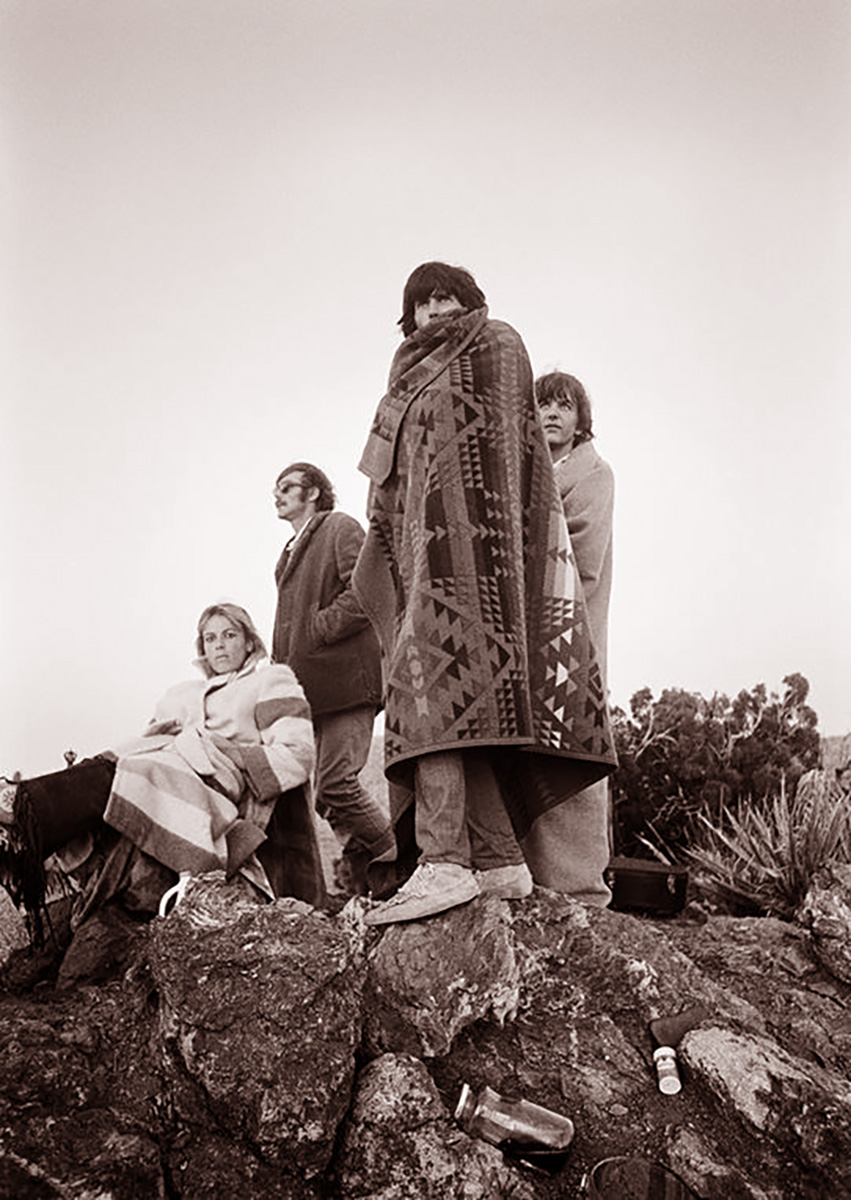
Why Joshua Tree? Edited from the Desert USA website:
In the late 1960’s, the Joshua Tree National Park became the hangout for many celebrities and musicians because this out of the way haven was only a few hours drive from Los Angeles [note: and about an hour from Palm Springs]. Gram Parsons was introduced to the Mojave Desert around this time and would frequent the Joshua Tree area on the weekends, often accompanied by his road manager, Phil Kaufman, and Keith Richards of the Rolling Stones; in-fact, some of Gram’s country influence can be heard in music of The Rolling Stones at that time, in the early 1970’s. Gram loved the Hi-Desert and did many photo shoots in it. He used to hang out at local bars and would often stay at the Joshua Tree Inn. He would visit the National Monument at night looking at the stars and searching the heavens for UFOs.

During a friend’s funeral in 1973, a few months before Parsons’ own death, it was discussed between Parsons and Kaufman that if either of them were to die prematurely, they wanted their body taken to the desert at Joshua Tree. They were to have one last drink with the corpse and then burn the body in the desert.

And here’s where things unraveled quickly:
A few months after this pact had been discussed Gram checked into room 8 at the Joshua Tree Inn on September 17th, 1973 for a couple days with a few friends.
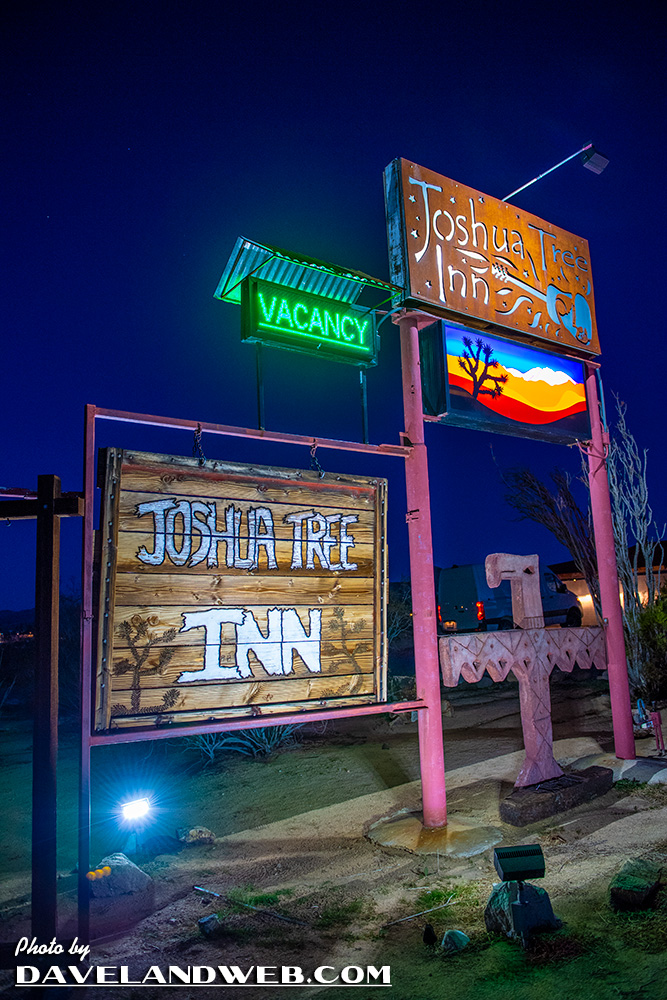
Kaufman was not there on this trip, and after two days of heavy partying, on the 19th Gram overdosed on both morphine and alcohol. As Kaufman was Parsons’ road manager and good friend, he was immediately called but by the time he got to the Inn, Gram’s body was already removed and was in the morgue of the hospital in Yucca Valley. Kaufman gathered up Gram’s belongings, cleaned up any drug evidence and headed back home to Los Angeles.
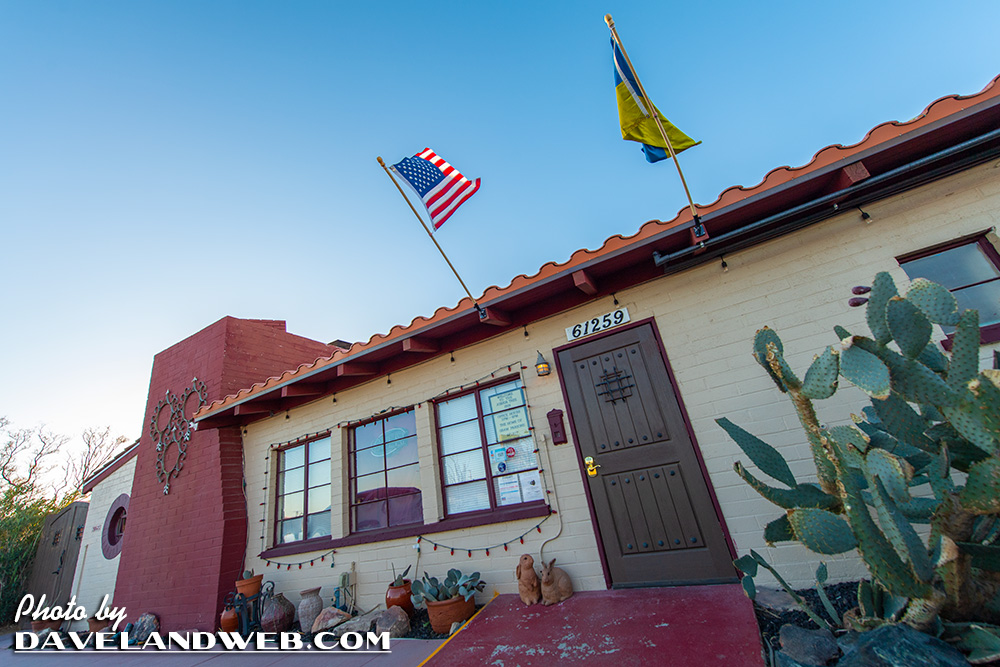
After a day of drinking and thinking about their pact and remembering Gram’s dislike for his stepfather in Louisiana and also thinking of his words at the friend’s funeral a few months earlier that he had not wanted a long, depressing, religious service with family and friends, Kaufman went into action.
I will add in this tidbit from myrareguitars website, which explains Gram’s strained relationship with his stepfather:
Gram Parsons’ stepfather, by most accounts an oily and brutally self-interested man, tried to rush GP’s body to New Orleans for burial. There was some Louisiana loophole that would allow for Bob Parsons to claim Gram was a New Orleans resident and thereby get his hands on the rather lucrative Parsons’ estate.
It also appears that Bob Parsons had an affair with the babysitter, who he ended up marrying after his wife (Gram’s mother) died from alcoholism. Back to the Desert USA website:
Kaufman called the mortuary in Yucca Valley and found out that the body would be driven to the Los Angeles International Airport and then flown on Continental Airlines to New Orleans. He called the airline’s mortuary service and found out that the body would arrive that evening, then recruited several friends that knew about the pact and borrowed a hearse that was used for camping trips. It had no license plates and several broken windows, but he thought that it would do. They tried on suits, but decided they looked so ridiculous that they changed into their tour clothes, Levi’s, cowboy boots, cowboy hats, and jackets with “Sin City” stitched on the back. They loaded the hearse up with beer and Jack Daniels and headed for the airport.
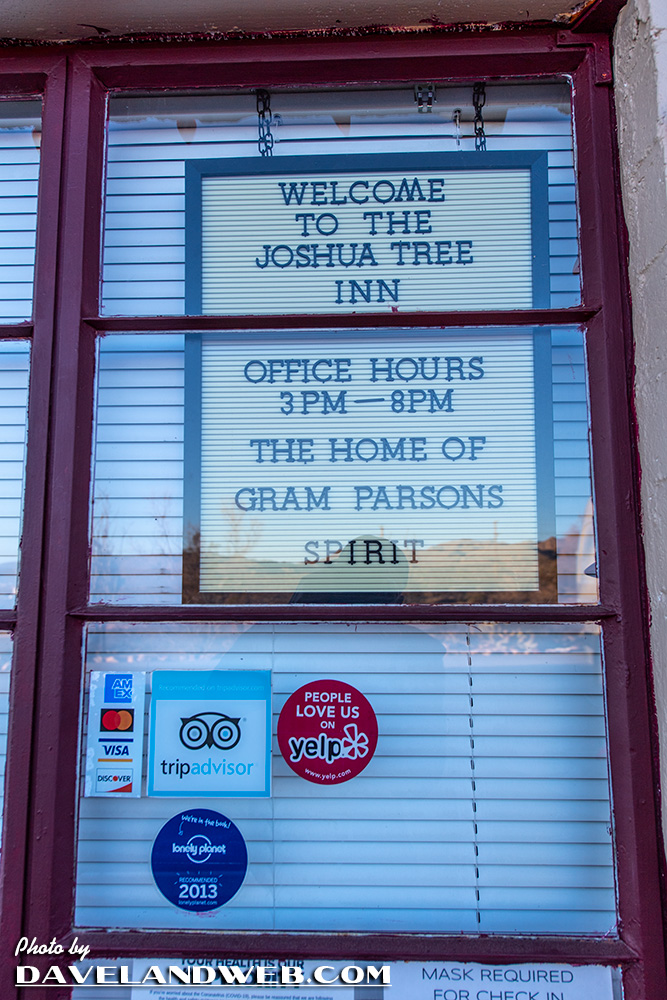
Kaufman and his friend Michael Martin arrived at the loading dock just as a flatbed truck rolled up with the Parsons casket. A drunken Kaufman somehow persuaded an airline employee that the Parsons family had changed its plans and wanted to ship the body privately on a chartered flight. While Kaufman was in the office signing the paperwork with a phony name a policeman pulled up blocking the hangar door. Kaufman was sure that he would be caught but the officer suspected nothing, he just sat there. Kaufman walked over toward him and waved his copies of the paperwork and said, “hey, can you move that car”? The officer apologized and moved the car and then actually helped him load the casket onto a gurney and into the back of the unlicensed, liquor filled hearse. Martin got in the hearse and attempted to drive out of the hangar only to run into the wall on his way out. The officer observed all this, and commented, “I wouldn’t want to be in your shoes now,” then he left. The two drunk body snatchers left the airport with the body of their friend; they stopped at a gas station in Cabazon near the Interstate 10 dinosaurs in the years before Casino Morongo existed. They filled a gas can and they headed back to Joshua Tree with the body of Gram Parsons. They reached Joshua Tree and drove until they were too drunk to drive any farther. They stopped at Cap Rock in The Joshua Tree National Monument, a landmark geological formation, and unloaded their friend’s coffin, then Kaufman saw car lights in the distance and concluded the police were coming. He quickly opened the casket, played a personal joke on the dead Parsons that they used to do to each other in life, doused Gram with the gasoline and threw a match in the casket. The two watched as a giant fireball rose from the coffin, the skin on Grams naked body began blistering, the ashes rising into the desert night.
I’ll interject this description of what happened next, written by Kaufman himself:
We looked up and the flame had caused a dust devil going up in the air. His ashes were actually going up into the air, into the desert night. The moon was shining, the stars were shining and Gram’s wish was coming true. His ashes were going into the desert.
Back to the tale from the Desert USA website:
As the headlights in the distance got closer the pair quickly drove off and headed for home in Los Angeles. After a trip home filled with close calls, Kaufman and Martin laid low. The morning after their return, the newspapers were full of the story of the rock star’s hijacked and burnt corpse, speculating that the amateur cremation may have been a satanic ritual. Kaufman knew the police were looking for him, so after a few weeks, he and Martin just turned themselves in. They appeared in Court on Parsons’ 27th birthday, November 5, 1973. At the time there was no law against stealing a corpse and since a corpse has no intrinsic value, the two were charged with misdemeanor theft for stealing the coffin and given a slap on the wrist, $708 in damages for the coffin, and a $300 fine for each of the body snatchers.
From the weekly view website:
Kaufman threw himself a party to raise the fine money calling it “Kaufman’s Koffin Kaper Koncert.” They pasted beer bottles with crude homemade labels featuring a bad likeness of Parsons they named, “Gram Pilsner: A stiff drink for what ales you.” Dr. Demento served as deejay, and live music was provided by Bobby “Boris” Pickett and the Crypt Kickers of “Monster Mash” fame. Despite the graveyard humor that permeated the party, it turned out to be a memorable wake for their friend.
Back to the tale from the Desert USA website:
A few years after the incident, Kaufman ran into Keith Richards and Keith thanked him and said “I heard that you took care of our pal.” Kaufman’s adventure has been legendary in rock and country music circles ever since.
The cremation area at Cap Rock in Joshua Tree National Park still has people visit the spot but being a National Park all personal monuments to Gram are removed by the Park, so the site always looks different as fans make pilgrimages, leave items, paint on the boulders to leave some kind of remembrance, then they are removed by the Park and the cycle begins again.
The remains of the remains were shipped to New Orleans, where a dying Bob Parsons claimed and buried them in the Garden of Memories Cemetery in Metairie, Louisiana. The scheme to gain control of the rock star’s fortune was thwarted by a Florida court. About a year later, Bob Parsons died of an alcohol-related illness. He never made a dime off of Gram Parsons.
Why hasn’t there been a movie made about this? Or did I miss it?
Now I’ll take over the writing as I describe my own visit to the Joshua Tree Inn staying in (you guessed it) room 8.
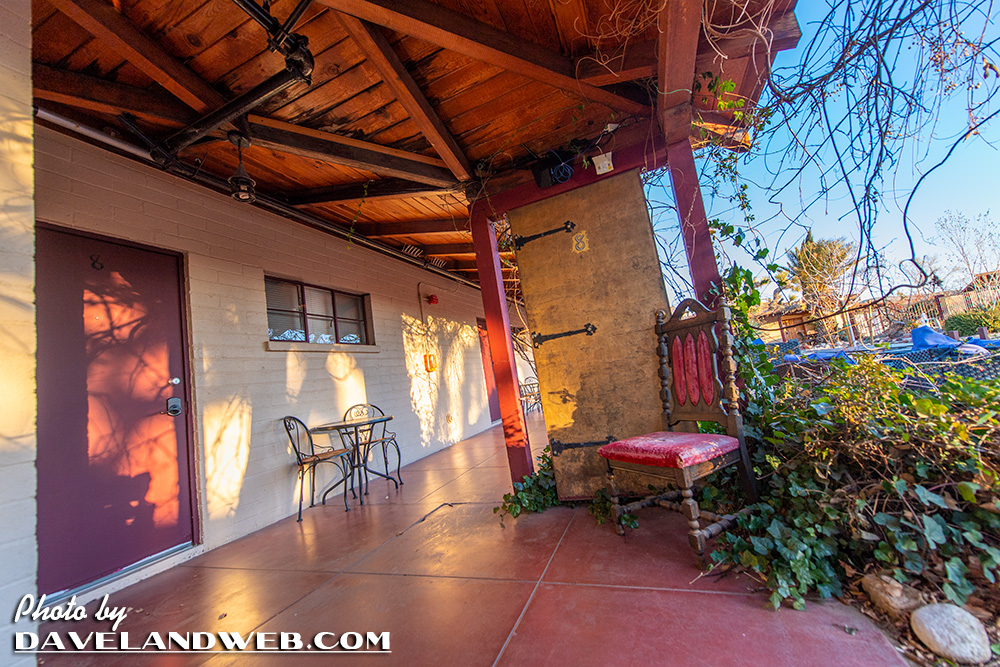
Justin was working the check-in desk when I arrived and could not have been more helpful. He gave me a lot of great information about Parsons in relation to the Inn. The current entry door was not the original one; since this was once a motor court, what is now the back door was the front. Here’s a view of the back of the Inn to illustrate:

Those areas are all fenced in now, providing a nice little back porch area for the rooms.
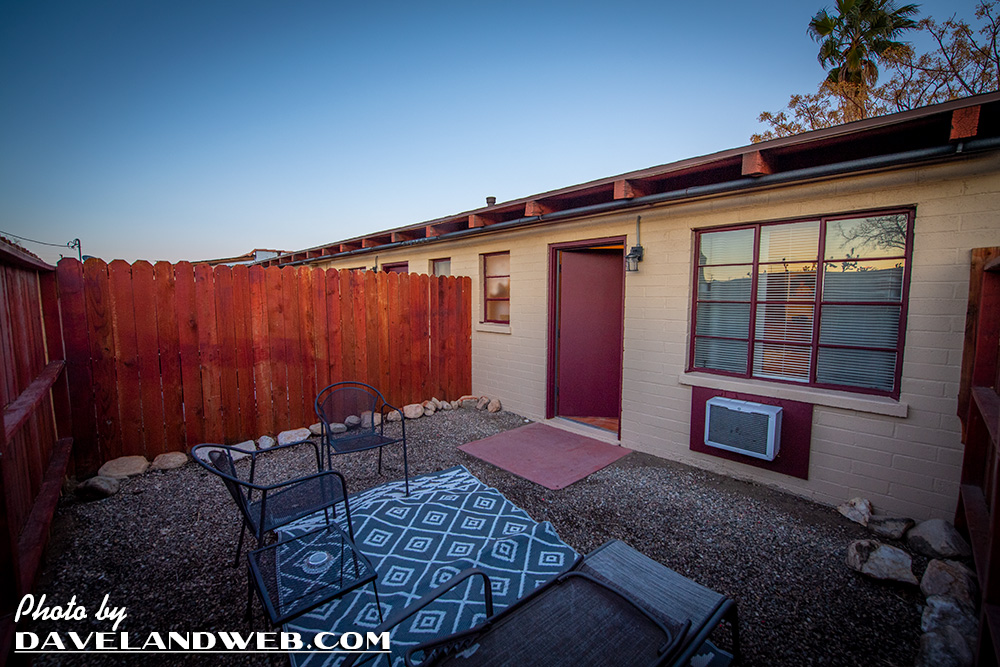
The “front door” that was here when Parsons stayed here is now sitting outside of room 8, serving as a sort of art installation:
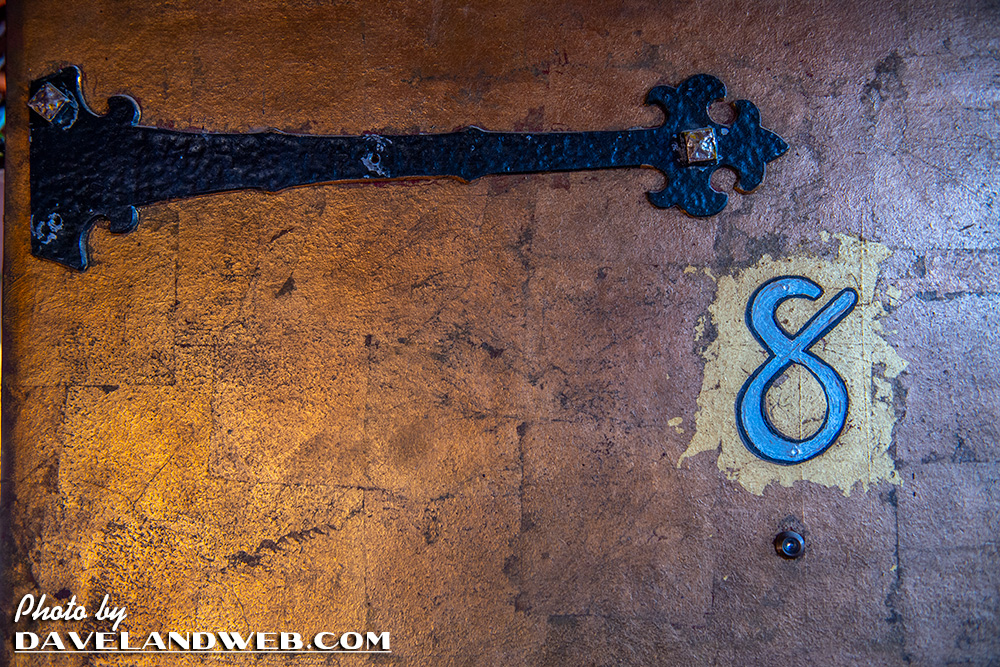
Justin also told me that there are two things in the room that have been there since Gram’s 1973 stay. This mirror:
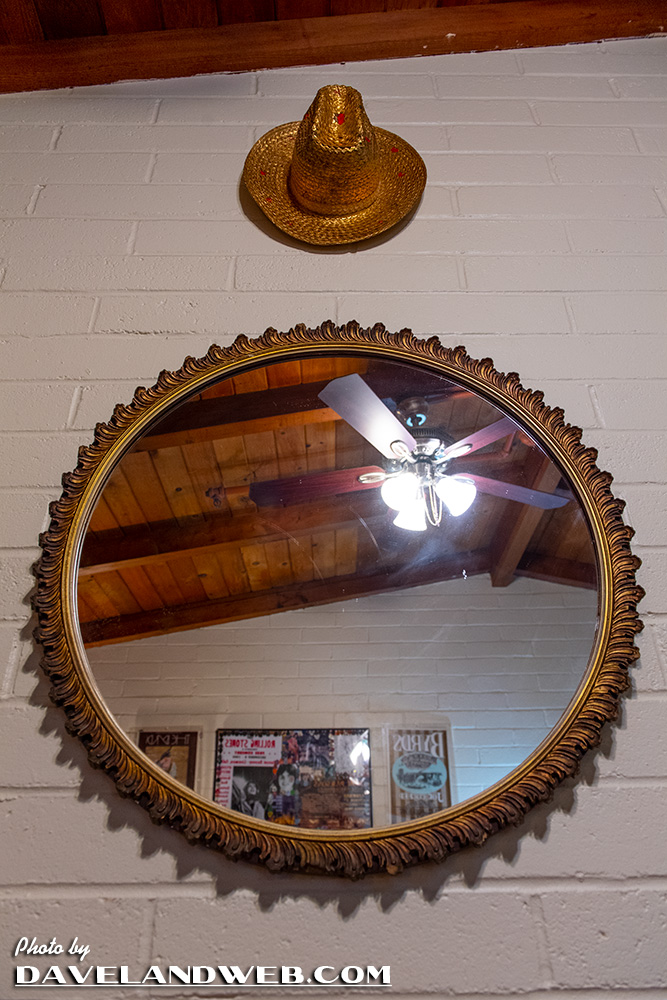
…and this art print, titled “David & Bathsheba” by Richard “Dick” Swift (1916-2010), which he created in 1963.

David & Bathsheba by Richard (Dick) Swift (1916-2010), 1963
The room also has a number of tributes to Parsons hanging on the wall, upstaged by Willis.

No, the lipstick is not mine.
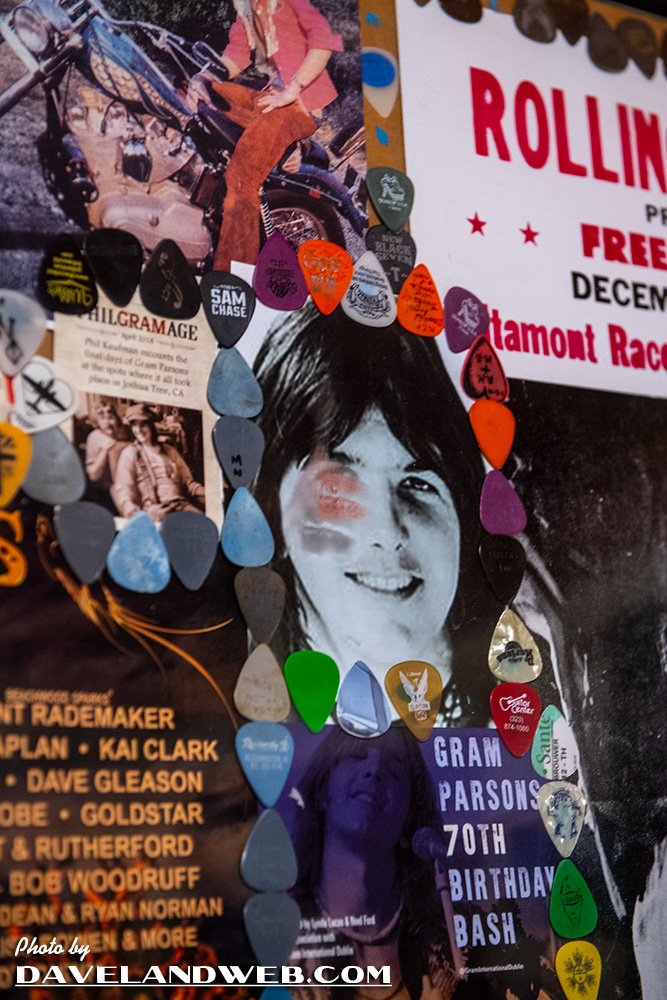
A poster hanging on the wall was a collage of photos showing Gram at the Chateau Marmont:

There are a number of areas to commune while staying there, making it the perfect place to stay with your friends.

The pool was being renovated, but considering the temps were between the 30s and 40s, that was a non-issue for me.

Outside room 8 is this tribute to Parsons:
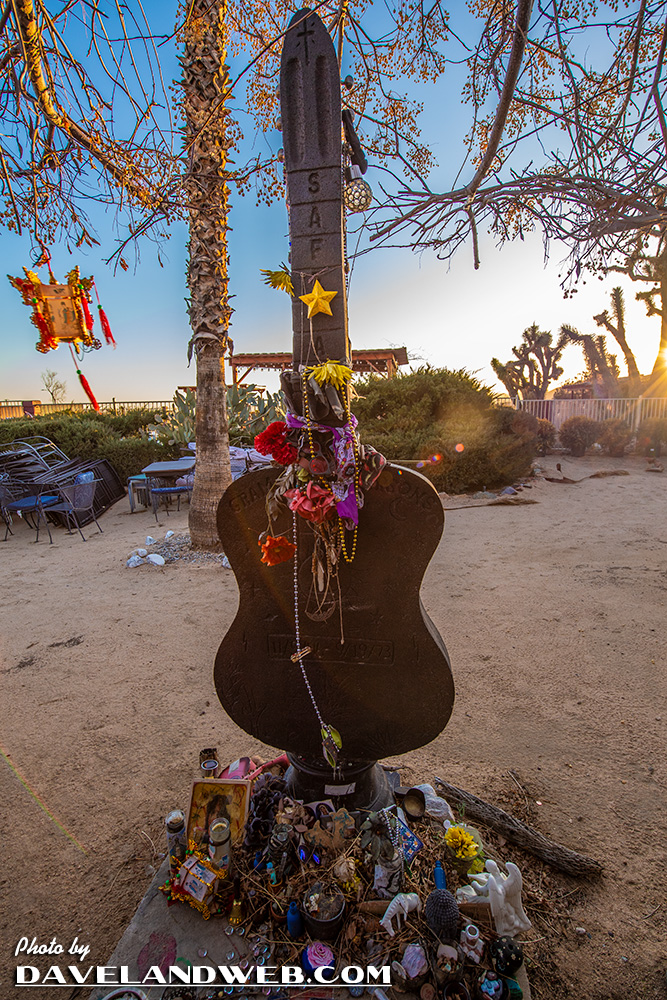
Would I stay here again? Definitely. It is the perfect hippie/artsy/quaint vibe that one should experience when visiting Joshua Tree (if you aren’t a camper). Willis thought the bed was mighty comfy, too.

See more Joshua Tree photos at my main website.

